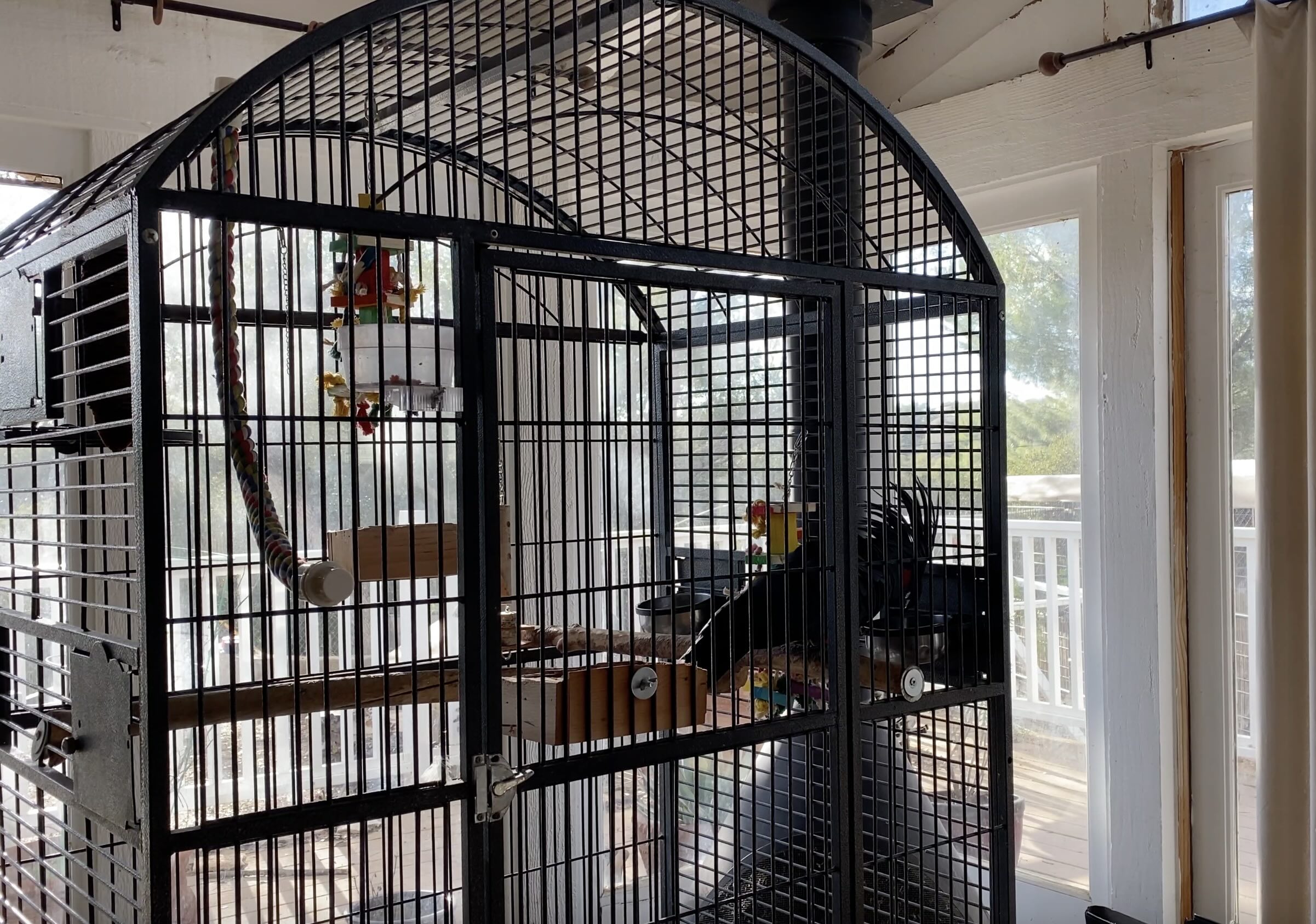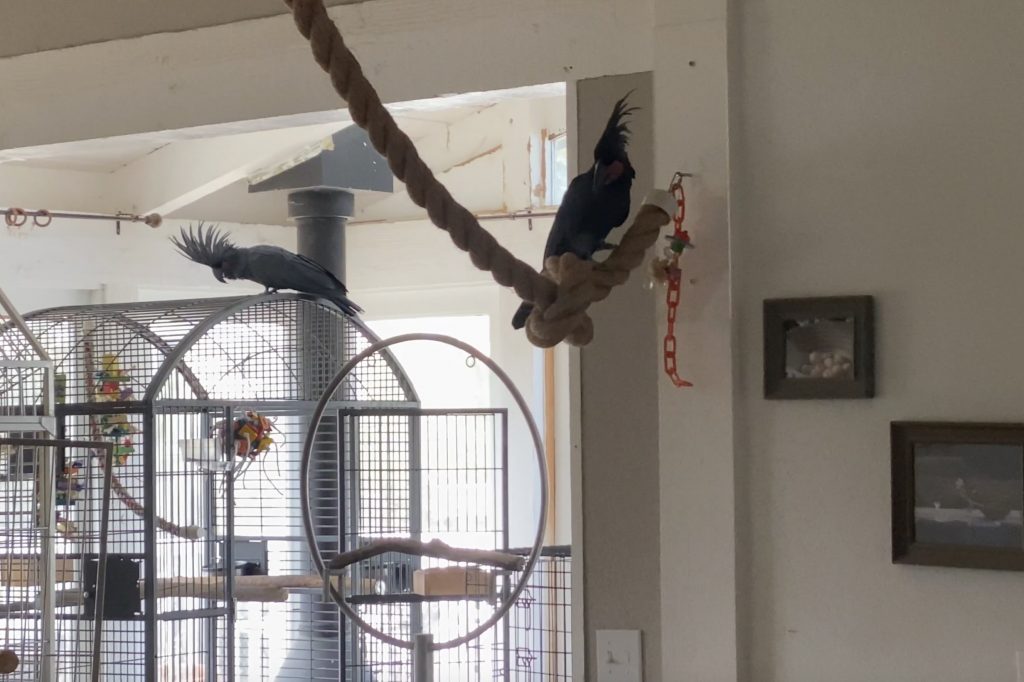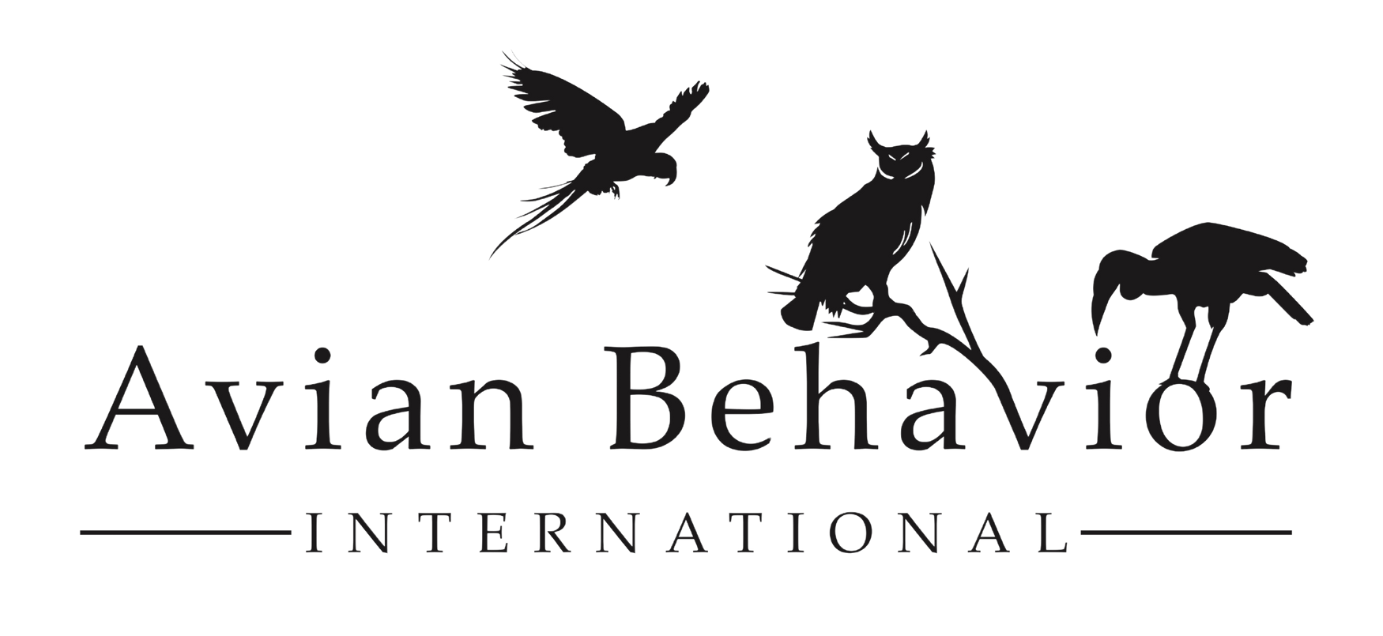
20 Jun What size of cage does my new parrot need?
When I entered the home of a lovely family with their new young African grey parrot, I was shocked to see the parrot in a cage that I would have found a bit small for my cockatiels. The wire width was thin enough the parrot could have easily popped it, he was sitting on thin wooden dowels, and the family was upset that their new bird was no where near as cuddly as it had been at the bird store.
While I was quick to point out that their problems weren’t completely due to the inappropriate cage, there was plenty to blame on it. The parrot couldn’t move around comfortably, and the cage then couldn’t support the proper dishes, perches, toys, front door, or fear-free cleaning practices. Plus, if the family had a cage this small for their parrot, it gave me concerns that there would be other critical aspects and expectations that were mismatched. After consulting for over 15 years, I have learned to look for signs of how I can most adeptly help a family reach success with their parrot. All of the best information in the world will be useless and frustrating if the people don’t know how or don’t want to implement it, and I am not in the business to take people’s money from them without a return on investment for their bird’s welfare.
I really wanted to this African grey and his family to succeed, and they were invested as well. We discussed why the cage was inappropriate, as well as why the parrot wasn’t interested in staying on the woodend dowel playgym that was on the ground.
Obtaining appropriate sized gyms and cages isn’t just about health and welfare, although that is a critical component. They can also impact your relationship with your parrot. Let’s explore this a bit more.
Size and space
The amount of room your parrot has in their home space is truly important. Some people claim that since their parrot will spend time outside of the cage, that size doesn’t matter. I don’t necessarily think this is the case. We want the cage to a positive space for you bird! Without getting too into the weeds here, the idea of “being behind bars” is a human construct. If your bird doesn’t have a safe space that they can retreat to for privacy, being out of the way of the commotion, eyeballs, and general hub of energy of the household, then we will likely see an uptick in problem behaviors. A spacious cage provides ample room for opportunities for your parrot to engage with environmental enrichment that are seeking behaviors, not behaviors that involve you. “Away” behaviors, those that take their focus and value seeking attention away from the family are important for avoiding problem behavior loops like calling for attention, feather destructive behavior, pair bonding and reproductive based behaviors, and many more.
As my good friend Katy McElroy always says, get the biggest cage you can possibly afford, even if you plan on having your bird out much of the day. You won’t regret it.
Bars and bar spacing
I mentioned in the African grey example that the bars were really thin and weak. This can be quite dangerous. I have worked with a few cockatoos, macaws, and African grey parrots that had been chewing on inappropriately sized metal objects and had them stuck up under their lower mandible. In most of cases, the parrot starting thrashing about and could have made the situation much worse. There are some scenarios that have ended with tragedy. This is avoidable! Parrots will pluck at cage bars, they will stick their head where we don’t expect, and they will chew on items for no apparent reason. Bar spacing must be appropriately sized to avoid a head poking through and a toe getting constricted.
One cage… or two?
If you have taken any courses from me, listened to the Avian Behavior Podcast, or heard me speak, you might be familiar with my thoughts on the two cage system. I am a big believer in sleep or privacy cages. If you have space for a secondary cage, they are worth their weight in gold. Having a parrot in a centrally located area such as a living room can be hard on the bird and the family. It also doesn’t make for good training because either you, your household members, or even the dog are constantly offering inadvertent reinforcers to behavior you don’t want to reinforce! Having a secondary cage set up with plenty of enrichment to keep your parrot occupied and if they engage in screaming, they won’t be reinforced can be a true marriage and sanity saver for everyone, and a home saver for your parrot.
Playgyms
Playgyms are so important to providing safe spaces for you parrot to have around the house where they know there is value and they won’t get shooed away. However, there is more than meets the eye to setting up the proper playgym. Recall I noticed the family’s playgym with their African grey and I instantly knew that it would be a problem. It was a wooden dowel playgym on the floor. Not only did it not have the proper perching size for the parrot, but it didn’t have the right toys for the bird to engage with and most of all, it was not at the right height for the bird to be comfortable. While some birds like to play on the floor, offering them options to stay higher, especially in a new environment, helps them feel safer and will keep them from wandering and finding trouble.
What I often see in these cases is that the parrot gets off and starts walking around, and the family repeatedly scoops the bird up to return to the playgym. Because there is no value for the parrot staying on the playgym, they start biting when the hand comes to retrieve them. This is how we see biting start to become ingrained. The more the parrot bites, the less out of cage time they have.
You can see how important it is to have some of these basics in mind when we design our parrots’ immediate home space. We have a whole course on what to do when you bring home your parrot as well as our parrot foundations live workshop and mentorship. This integrates how the decisions we make about our parrots impacts the outcomes of their behavior. We cover everything from wing clipping to diet. Join us in the Avian Behavior Lab.

